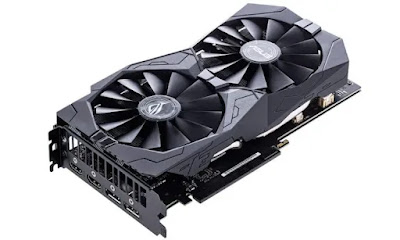Before jumping to conclusions that your GPU is responsible for poor performance, rule out potential software issues or hardware problems with other components that might cause similar symptoms. Signs like loud fan noise, better performance with integrated graphics, excessive heat at minimal load, low FPS, and frequent crashes indicate hardware issues with your GPU. If your GPU is still under warranty and you notice these signs, get it replaced by the manufacturer. If there's no warranty, seek local help to assess if repairs can be done. GPUs are crucial components handling graphic-intensive tasks. While highly durable, they eventually wear out and start failing. Before reaching its final moments, they usually exhibit signs of impending failure, signaling the need for timely repairs or replacement. This guide outlines these signs.
Before We Begin...
Before learning about signs of a faulty GPU, it's important to note that some indicators mentioned below could also arise due to software issues on your computer, errors in other components like RAM and SSD, improper GPU installation, running outdated or corrupted drivers, and other factors.
Before proceeding, ensure that the GPU is connected properly, its drivers are updated, and you haven't overclocked the GPU or misconfigured any software settings. Additionally, disconnect the dedicated GPU connection and run your PC on integrated or alternative GPU to see if the same issue persists. If yes, the cause might be other components or software settings, not the GPU in question.
If the signs listed below persist even after the above issues are addressed, it indicates a potential problem with your GPU. However, as you assess these signs, continue eliminating other causes if they make sense.
1. Loud and Unusual Fan Noise
Graphics cards typically generate noise when handling heavy workloads. However, if the sound becomes unusually loud or strange, it may indicate an issue with your GPU. Check inside the casing to ensure all GPU fans are spinning as they should. If you find one or more fans resting, barring other potential issues, this suggests something's amiss.
If the GPU fans are spinning but emitting loud noise, unplug the GPU's power connector, clean any dust, and check for fan damage. Then, run the PC without the GPU to see if the noise comes from another source. If the noise only occurs when the GPU is plugged in, it indicates a potential hardware issue with the graphics card.
2. Your Integrated Graphics Card Performs Better
An effective way to gauge if your GPU is failing is by switching to integrated graphics for specific applications and assessing their performance. In Windows, navigate to Settings > System > Display > Graphics, select the desired application, click "Options," choose "High Performance," and save the settings.
If you use specialized GPU software, it usually allows you to switch the default GPU. If you encounter issues and graphic-related errors when running graphic-intensive tasks on the dedicated GPU but these issues disappear when switching to integrated graphics, it suggests that your primary GPU may be nearing the end of its lifespan.
3. High GPU Temperature Without Excessive Load
Under heavy load, a GPU's normal operating temperature usually falls between 65°C and 85°C, while it should be below 30°C-40°C at idle. However, if there's a hardware issue with the GPU, it may run hotter than usual. If you notice several warning signs and suspect your GPU may be failing, closely monitor the GPU temperature.
If the GPU temperature remains high even at idle or rises sharply under light load, it's another indicator that your GPU may be experiencing issues requiring further investigation.
4. You Frequently Encounter GPU-Related Errors
Ideally, your GPU should function without triggering errors under normal operating conditions. If you experience GPU-related errors, basic troubleshooting steps like updating graphics card drivers, ensuring the GPU is enabled, resetting its settings, checking system updates, and turning off overclocking usually resolve the issue.
If you notice an increase in persistent GPU-related errors despite trying the recommended troubleshooting steps, it may indicate a hardware issue with your graphics card.
5. Poor Graphics Processing and Decreased FPS
If you have a high-end graphics card with adequate VRAM, compatible power supply unit (PSU), sufficient ventilation, and RAM operating at decent clock speeds, you should expect optimal GPU performance. However, if your games lag more often, take longer to load, and have poor graphics processing, it's a warning sign that something's wrong.
via emka.web.id




0 comments:
Post a Comment